Bennington Battle Day in America
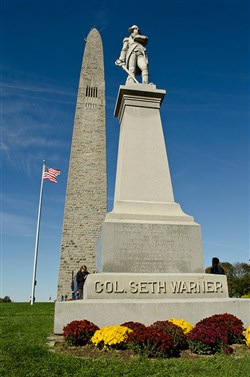
Many states across the United States have their own “state holiday” that is only celebrated in that state. This is true for Vermonters who celebrate Bennington Battle Day in Vermont to commemorate the Battle of Bennington, an American victory over the British during the American Revolutionary War in 1777. The holiday is celebrated annually on August 16. So one might ask what this holiday is all about. For many citizens in Vermont, Bennington Battle Day is a time to remember a turning point in the war. Like any rightful state that tasted victory on the battlefield over British oppression during the Revolutionary War, a day to honor their states victory only seems fitting. Oddly enough, the Battle of Bennington (Bennington, a town in Vermont) actually took place in New York, not Vermont! So how is this even possible?
Bennington, a town located in southern Vermont very close to New York was a supply depot which housed horses and oxen, and munitions. After the British general heard about a supply depot in Vermont, with little in the way of defense, he sent 1000 soldiers to raid the town and take the supplies. However Bennington was guarded by General John Stark and about large Vermont militia which included Colonel Set Warner and some of the Green Mountain Boys. Bennington. After catching word of a British attack on the supply depot, General John Stark and his militiamen alongside Colonel Warner’s Green Mountains Boys arranged a preemptive attack that happened in New York. Stark’s army was able to surround the British soldiers, kill their leader, and took an alarming amount of prisoners captive. It is said that Stark, Warner, and the Vermonters were able to inflict a large amount of casualties while also capturing 700 soldiers. This victory deprived British forces in the region of much needed supplies – later resulting in more surrenders. This battle was a significant victory for the rebelling Revolutionary forces, even inspiring more colonist to support the rebellion. Many historians credit the Battle of Bennington as one of the first victories for the United States. This victory along with a string of other great victories finally forced Britain to surrender, giving way to what is now known as the United States of America and its independence and freedom.
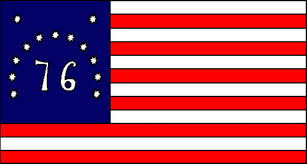
The Vermonters host a range of events to celebrate the military accomplishments of the New York, New Hampshire, and Vermont militias during the Revolutionary War. In observation of Bennington Battle Day, most events are programmed around historical education and entertainment. Visitors and the locals take rides up the elevator to the top of the Bennington Monument which is about 306 feet about the streets of Bennington for panoramic views of the hills of Vermont, Massachusetts, and New York. The stone monument marks the site of a critical supply depot that resisted British forces which ultimately helped surrender a vast majority of their soldiers. Battle re-enactments, parades, and other festivities mark the streets in celebration. (Picture: The Bennington flag, a version of the American flag associated with the American Revolution Battle of Bennington, from which it derives its name).
A Flag on the Moon: We Came in Peace for All Mankind
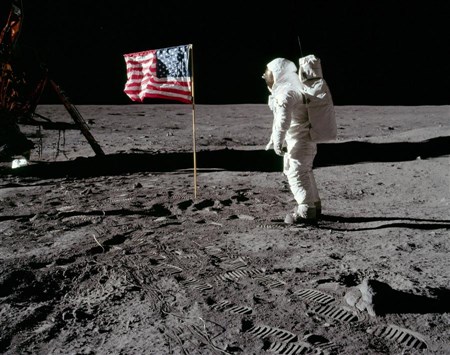 The 1960’s are remembered for many things; John F. Kennedy became the 35th president of the United States and a few years later was assigned, The Beatles released their first single, Martin Luther King Jr. gave his famous "I Have a Dream" speech, Woodstock Music & Art Fair, the Vietnam war, the fight for civil rights, radical protests, and an arms race to the moon against the Soviet Union. However, most who were alive during that time remember one thing specifically, exactly where they were when they heard or saw American astronaut Neil Armstrong, 240,000 miles from Earth, speaking these words to more than a billion people listening at home: “That’s one small step for man, one giant leap for mankind.” Stepping off the lunar landing module Eagle, Armstrong planted his left foot on the gray, powdery surface becoming the first human to walk on the moon.
The 1960’s are remembered for many things; John F. Kennedy became the 35th president of the United States and a few years later was assigned, The Beatles released their first single, Martin Luther King Jr. gave his famous "I Have a Dream" speech, Woodstock Music & Art Fair, the Vietnam war, the fight for civil rights, radical protests, and an arms race to the moon against the Soviet Union. However, most who were alive during that time remember one thing specifically, exactly where they were when they heard or saw American astronaut Neil Armstrong, 240,000 miles from Earth, speaking these words to more than a billion people listening at home: “That’s one small step for man, one giant leap for mankind.” Stepping off the lunar landing module Eagle, Armstrong planted his left foot on the gray, powdery surface becoming the first human to walk on the moon.
The impossible task of putting a man on the moon was put into notion in the early part of the decade after President Kennedy made a mandate to put a man on the moon before the Soviets and the decade end. In a speech former President Kennedy stated: “I believe this nation should commit itself to achieving the goal, before this decade is out, of landing a man on the moon and returning him safely to Earth.” At the time of this speech, the United States was trailing the Soviet Union in space developments. In 1966, five years after President Kennedy’s mandate, the National Aeronautics and Space Administration (NASA) launched the first unmanned Apollo mission. Then in 1967 tragedy struck the Kennedy Space Center in Cape Canaveral Florida after a fire broke out during a manned launch pad test, killing three astronauts.
In the face of many setbacks, NASA along with thousands of employees including a team of international scientist and engineers, forged ahead in their quest at an alarming rate. Hard pressed to see this mandate completed before the decade’s end, they worked nonstop to reach success in 1968 with the first manned Apollo mission. Apollo 7 orbited Earth and successfully tested the sophisticated computer systems that were created to conduct a safe and achievable moon mission and landing. Two months later three astronauts on Apollo 8 journeyed to the dark side of the moon and back and in March the following year, the Apollo 9 mission were able to test the lunar module in Earth’s orbit that would later be used by Neil Armstrong’s Apollo 11 team. Then another milestone was reached when Apollo 10 took the first complete Apollo spacecraft around the moon on a test run before the scheduled Moon landing mission.
With the world watching on July 16th, 1969, the Apollo 11 crew launched with astronauts Neil Armstrong, Michael Collins, and Edwin Aldrin abroad. Seventy six hours after launch, Apollo 11 entered into lunar orbit. The next day, the lunar module Eagle began its decent to the lunar surface and on July 20th, 1969 the world of possibilities was changed when the Apollo 11 crew accomplished the seemingly impossible feat and became the first manned lunar landing mission to place humans on the surface of the moon. Six hours after landing on what is called the Sea of Tranquility; Neil Armstrong took the first footsteps on the surface of a world beyond Earth. This iconic milestone for mankind is marked with the planting of a U.S. flag on the moon’s surface, which still remains today while also leaving behind a patch honoring the fallen Apollo 1 crew and a plaque of one Eagle’s legs. It profoundly reads: “Here men from the planet Earth first set foot on the moon–July 1969 A.D–We came in peace for all mankind.”
In all of American history, the U.S. flag has been a symbol of perseverance. It is no surprise that we planted a U.S. flag on the moon, after all our country has proudly displayed and raised our great flag in the most trying times of conflict, challenge, and adversity. Our nation has always endured as a country as we have raised American flags abroad, staked our claim to this great nation with the old glory flag, and to accomplish the unbelievable and impossible task of landing on the moon…there would be no other way to represent this great milestone for mankind.
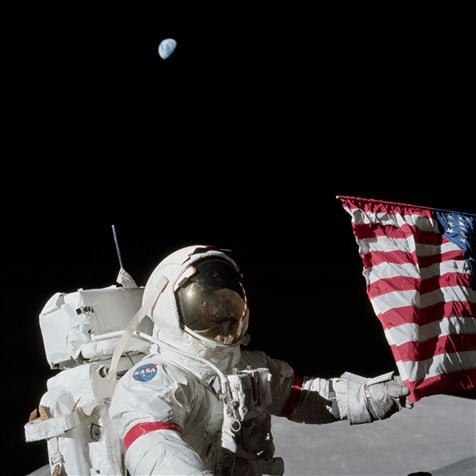
A Flagpole for Father's Day
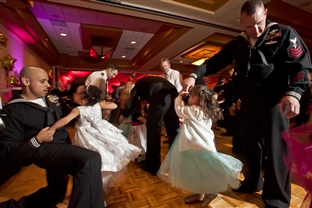
Father’s Day is a day for the men, a day to honor fathers and father figures for the roles they play in their children’s lives and the contributions they make. It is celebrated on the third Sunday in June every year, although it is not a federal holiday it is a nationwide holiday in the United States. Father’s Day was first celebrated on June 19, 1910, in the state of Washington but was not officially recognized as a holiday until President Richard Nixon signed Proclamation 4127–Father’s Day (fifty-eight years after President Woodrow Wilson made Mothers Day official). In an excerpt from the proclamation Nixon states:
“Our identity in name and nature, our roots in home and family, our very standard of manhood—all this and more is the heritage our fathers share with us. It is a rich patrimony, one for which adequate thanks can hardly be offered in a lifetime, let alone a single day. Still it has long been our national custom to observe each year one special Sunday in honor of America's fathers; and from this year forward, by a joint resolution of the Congress approved April 24, 1972, that custom carries the weight of law.”
So how did Father’s Day get its roots? There have been a series of events that have inspired the idea of Father’s Day, such as the start of Mother’s Day dating back to the first decade of the 20th century. Another event was a saddening memorial service held in 1908 for a large group of coal miners who were killed in a mining accident in Monogah, West Virginia in December of 1907. Many of the men involved in the infamous mining event were fathers. However, the key role in the founding for a day to honor the fathers came when a woman named Sonora Smart Dodd who is known as the “Mother of Father’s Day” was raised by her father of six children after her mother died in childbirth. After attending a church service about Mother’s Day, she questioned why there was no special day for the Fathers. After attending that sermon, Dodd later suggested establishing such a holiday to the Spokane Ministerial Association and the YMCA. And so the first unofficial Father’s Day was celebrated in Spokane, Washington on June 19, 1910.
Taking your father out to their favorite restaurant is widely used as well as gifting grilling equipment, tools, gift cards, and outdoor home goods. Here at US Flag Supply, we say your dad is someone to look up to – And Father’s Day is your chance to pay him back with something he can look up to everyday. Literally, with a flag pole kit, a unique gift that will stand the test of time and be something that the special men in your lives can be proud of. Cheers to the fathers!
Bunker Hill Day - Parades, Flags, and Re-enactment Groups
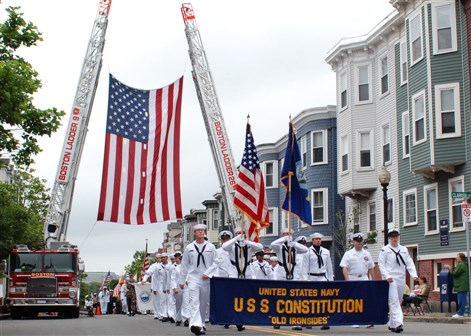
Bunker Hill Day marks the anniversary of the Battle of Bunker Hill, which took place on June 17, 1775 in the Boston Harbor of Massachusetts. Every year on June 17th, The Battle of Bunker Hill, also known as the Battle of Breed’s Hill, is commemorated because it was the initial start of the Siege of Boston and the opening phase of the American Revolutionary War that ultimately led to American Independence. A range of events are held each year in observance of Bunker Hill Day, including the famous Bunker Hill Day parade in Charlestown, Massachusetts. Families have been enjoying the Bunker Hill Day parade, a tradition since 1786. Various groups participate in the traditionally long-standing parade including: local marching bands, live musical groups, current and former military members, re-enactment groups, fire trucks and police motorcycles, and locally sponsored floats. Many people also visit the Bunker Hill Monument or other historic sites on the Boston Freedom Trail. Other festivities include a range of organized events at historic sites and museums that feature re-enactments of historical events, displays of Native American life, demonstrations of Colonial life, and live music performances.
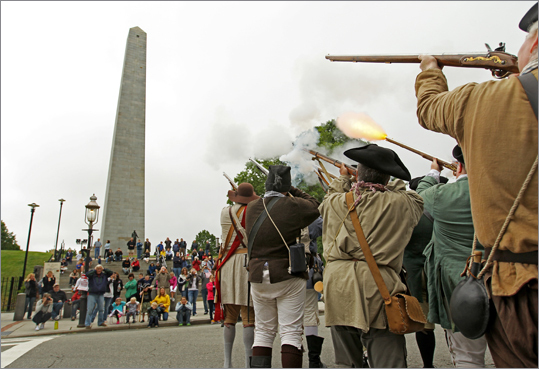
Blue Angels Take their First Flight Over Jacksonville, Florida
On this day in history in 1946, an unnamed flight demonstration team was ordered by the Chief of Naval Operations to keep the public interested in Naval Aviation while boosting Navy and American morale. Lt. Commander Roy “Butch” Voris was chosen as the new flight team’s commander and tasked with selecting a team of pilots and ground staff to help execute flight demonstrations in the Grumman F6F Hellcat, the main Navy fighter airplane used during WWll. The unnamed team’s first aerial display took place on June 15, 1946 at Jacksonville’s Craig Field in Florida. After a month of the assembled team’s existence, the team’s name was given from an inspiration by the famous New York nightclub, Blue Angel nightclub. The first demonstration under the newly named Blue Angles was a show in Omaha, Nebraska on July 19, 1946. By the late 1940's, the Blue Angels were flying their first jet aircraft, the Grumman F9F Panther. With the country facing conflict in Korea, the team reported to aircraft carrier USS Princeton as the the nucleus of Fighter Squadron 191 or VF-191, in 1950. They were reorganized the following year and reported to Navy Air Station (NAS) Corpus Christi, Texas where they began flying the newer and faster version of the Panther, the F9F-5. The Blue Angels remained in Corpus Christi until the winter of 1954 when they relocated to their present home at NAS Pensacola, Florida.
Now celebrating their 71st year, the amazing and highly talented Blue Angels have flown for more than 450 million spectators.
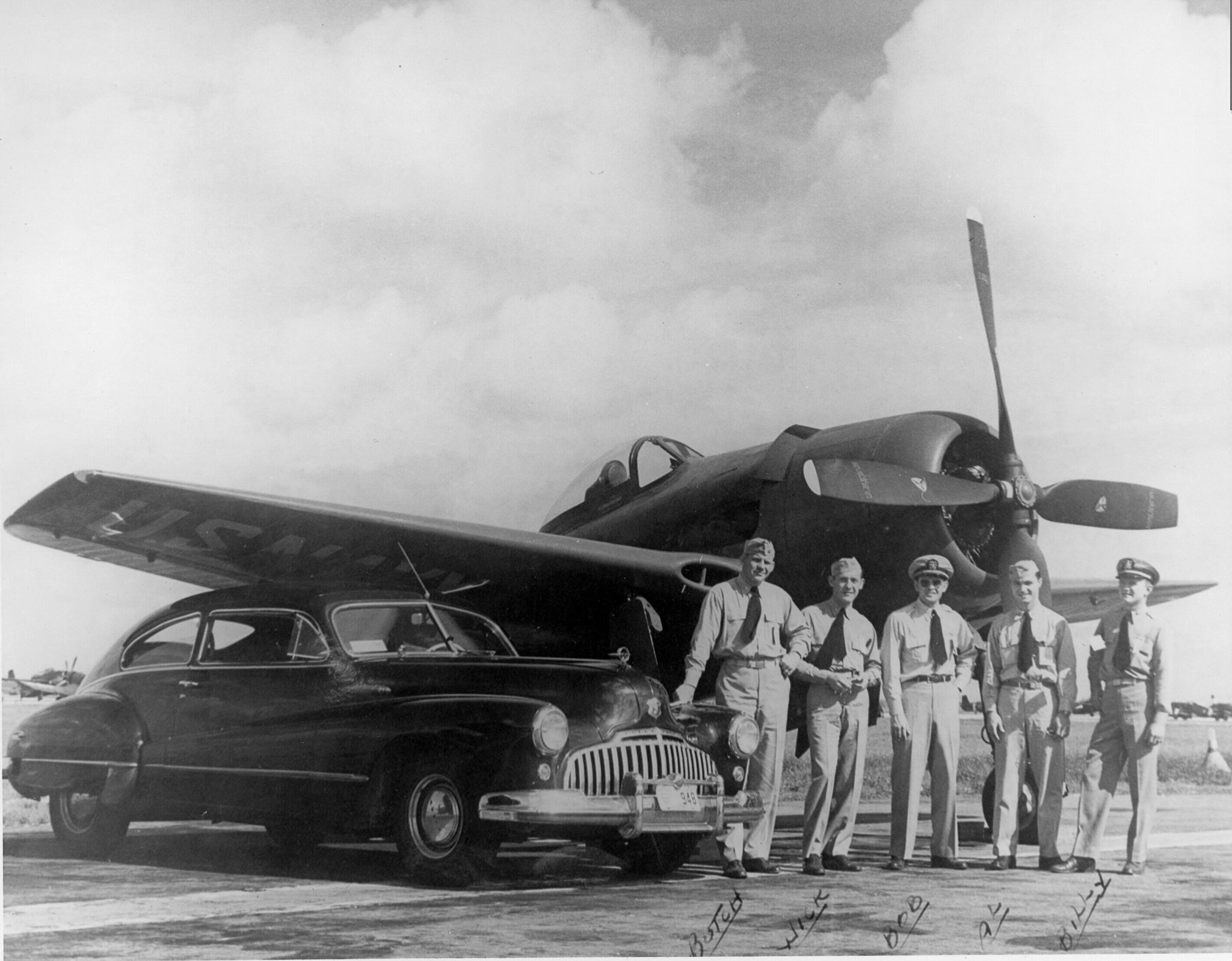 The first public display of the Blue Angel modified F6F Hellcat occurred on June 15, 1946, at
Craig Field.
The first public display of the Blue Angel modified F6F Hellcat occurred on June 15, 1946, at
Craig Field.
Photo credit: thanlont.blogspot.com
Flag Day in America, June 14th
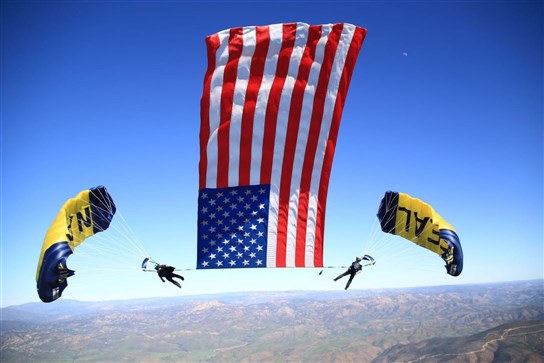
The United States flag represents freedom and has been an enduring symbol of the country’s ideals since its independence from British rule. Most Americans celebrate the fourth of July as America’s independence but did you know that Flag Day is observed across the United States each year because of the adoption of the Stars and Stripes as the flag of the United States? On June 14th, people across the United States celebrate Flag Day to honor the United States flag and to commemorate the flag’s adoption, which happened on June 14th, 1777. Coincidently, the Army’s founding and Flag Day coincide on the same date.
The birth of the American flag according to legend was in 1776, when General George Washington commissioned Betsy Ross, a Philadelphia seamstress, to create a flag for the new nation in anticipation of a declaration of its independence. On June 14, 1777, the Continental Congress passed a resolution adopting the first flag of the United States when John Adams stated, "Resolved, that the flag of the thirteen United States shall be thirteen stripes, alternate red and white; that the Union be thirteen stars, white on a blue field, representing a new constellation." The former Grand Union flag which featured the Britain Union flag in the canton (inner corner) was replaced with the new design featuring five point stars for each state in the union. Since the U.S. flag’s conception, there have been twenty-seven official versions, with the current version dating back to July 4, 1960, when Hawaii became the 50th state.
The national observance of Flag Day came years later on June 14, 1916, when President Woodrow Wilson issued a proclamation calling for a nationwide observance of the event. However, Flag Day did not become official until 1949 when President Harry Truman signed the legislation into law, proclaiming June 14 as National Flag Day. Flag Day is not an official federal holiday, however a nationwide observance. People honor this day by displaying the U.S. flag at homes and public buildings, with singing of the National Anthem, reciting of the Pledge of Allegiance and Presidential Proclamation, and with flag raising ceremonies. Other celebrations include street parades, awards for special recognition's, school quizzes and essay competitions. The American flag has carried many nicknames over the years, such as “Old Glory” or “Star-Spangled Banner,” but what hasn’t changed is what the flag represents, “One nation under God, with liberty and justice for all.”
(Photo credit - U.S. Department of Defense)
United Nations World Environment Day - 'Connecting People to Nature'
Every year, June 5 is celebrated as World Environment Day and has a new theme. World Environment Day is run by the United Nations Environment Program (UNEP). It is well known that there is physical and mental health benefits of being in nature, which is the theme of this year’s World Environment Day – ‘Connecting People to Nature’. The United Nations is making big strides in highlighting the benefits from food security, water supply, and climatic stability, which clean environments provide to humanity. Whether it is land, waterways and oceans, forests, or the air we breathe, everyone has a role to play in protecting our world home. Including using less plastic, wasting less food, driving less, and teaching others to care to name a few.
Environmental Day is celebrated to raise global awareness and action for the environment and various environmental issues. This day helps reaffirm actions needed to protect nature and Earth that will lead to a positive and healthy environment for all. It also provides us with the opportunity to think about how we are part of nature and how intimately and indisputably we depend on it for survival. “On World Environment Day, and every day, let us reconnect with nature. Let us cherish the planet that protects us,” concluded Mr. Guterres Secretary-General of the United Nations. World Environment Day is the largest global day for positive environmental action. The UN Environment Program (UNEP) says thousands of people across six continents are joining massive clean-ups of beaches and parks, and over 30 iconic landmarks, including the Empire State Building, 'Christ the Redeemer' statue in Rio, and Niagara Falls, will light up in green.
This year’s theme has encouraged people to admire nature and challenges us to take part in protecting our environment. Get outside today, reconnect with Mother Nature, perhaps get your hands dirty, and find fun and exciting ways to experience and cherish this vital relationship we have with our earthly home.

Memorial Day: A Brief Snippet of How this Holiday Came To Be
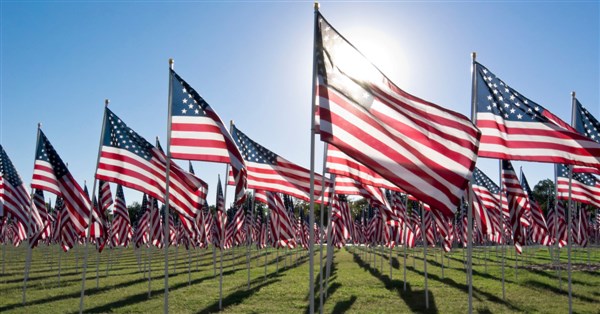
It’s easy to forget the meaning behind Memorial Day when sitting beside a pool or at a cookout with beer in hand, but the day signifies much more than just a three-day weekend. Yes, Memorial Day is synonymous with pools opening and cookouts, the start of summer (unofficially), and of course the beloved three-day weekend most Americans look forward to but what exactly does this day mean? Most Americans are unaware that Memorial Day started as a way to commemorate the deceased of the Civil War, a staggering 620,000 lives lost. After the war, as the North and South where reunited as one the meaning behind Memorial Day took root differently. It wasn’t until after World War II that Memorial Day became a federal holiday, gained its national identify, and was officially given its name in 1968.
The holiday has long been observed on the last Monday in May for decades now but that wasn’t always the case. Initially, Memorial Day was set on May 30 – which, doesn’t always fall on the last Monday in May. The current changes behind the move to the last Monday in May were primarily due to increasing commercialization. Jennifer Mittelstadt, a professor at Rutgers University stated that, “It has everything to do with commerce in the United States", she says. “Travel organizations had been pushing for three-day weekends like this since the 1950s, and they finally got the employee unions on board and the federal employee unions on board because there was a fair amount of agreement that it’d be good for business". The changes enacted in 1971 proved to be popular, ensuring a three-day weekend with a paid holiday, and the current status as the unofficial beginning of summer. These changes came on the hills of a tumultuous time in American history when patriotism and national morale were quite low in the wake of the Vietnam War. With the holiday's move to Monday, it turned the weekend into an occasion for shopping, not just sports and vacations, and helped strengthen the recreation and leisure movement in America.
Today there is great symbolic behavior in America that is collectively felt and expressed during Memorial Day. Feelings that confront the anxiety of death while allowing traditional community parades to provide feelings of exhilaration that mimic a sense of group strength people have felt during war. The sacred meaning behind the day combines recreation and leisure with mourning and ceremonies to express sorrow and unity and historically helped boost morale in America. Visiting grave sites of those who have died during wartime still remains a part of the day and is observed at cemeteries nationwide. The observance of this day is a great time to reflect in remembrance for all the lives lost fighting for our freedom. God bless America!
Display Flags for National Maritime Day
National Maritime Day is observed each year on May 22 as a time-honored tradition that recognizes one of our country’s most important industries. The United States has been a longstanding maritime nation bounded by two oceans, the Gulf of Mexico, and traversed by inland waterways. From our roots as a free country onward through every conflict and period of peace since, the maritime industry, including merchant mariners have been pillars in supporting this country’s commerce and national security. The men and women, who crew ships, power the world’s largest economy and cement our ties with trading partners around the world. Merchant mariners also protect our homeland by shipping troops and supplies wherever they need to go, often heading into war zones and even sacrificing their lives. They even maintain our eyes and ears on the sea. President Donald Trump proclaims May 22, 2017, as National Maritime Day and calls upon the people of the United States to display the US flag in their home and communities, as well as requests that all ships sailing under the American flag dress ship on that day.
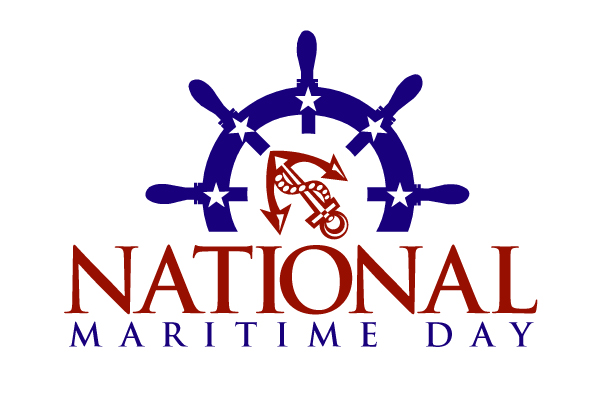
Armed Forces Day 2017
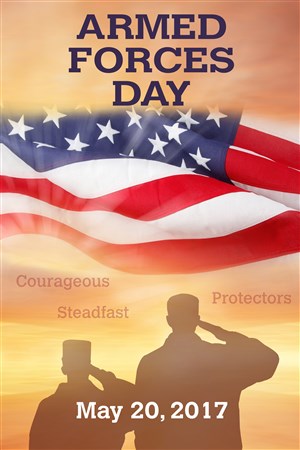
Armed Forces Day is just around the corner. Most, including me (if I’m being honest) are unaware of such holiday. So what exactly is Armed Forces Day? It’s a holiday created and led by former President Harry S. Truman in an effort to establish a single day for the nation to come together and thank our military personnel for their patriotic service in support of our country. This holiday replaced separate Army, Air Force, Navy, and Marine branches from having their own day of honoring and thanking their servicemen. Furthermore, the single day celebration stemmed from the unification of the Armed Forces under the Department of Defense.
Armed Forces Day is celebrated on the third Saturday in May and falls during Military Appreciate Month along with Memorial Day. May is a month filled with days to give thanks and honor the service members who protect our great nation and who have perished in the pursuit of our freedoms and independence. We owe more than just a few days in May to these brave and honorable people. The same people who leave their families and homes behind to carry out duties in places far away. So with great respect and gratitude, we pause, reflect, and give thanks for the many things we have and experience as a free country because of our Armed Forces. Thank you for all that you have done and all that you continue to do.
